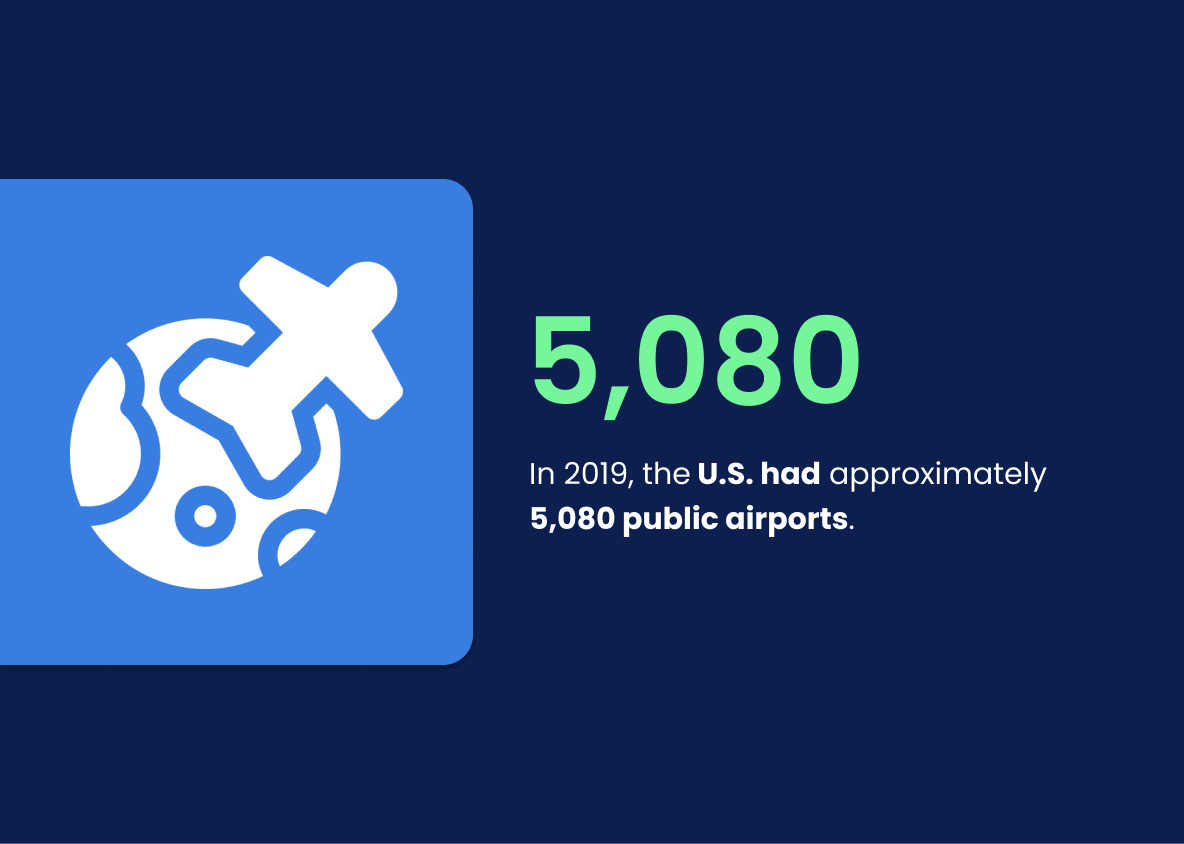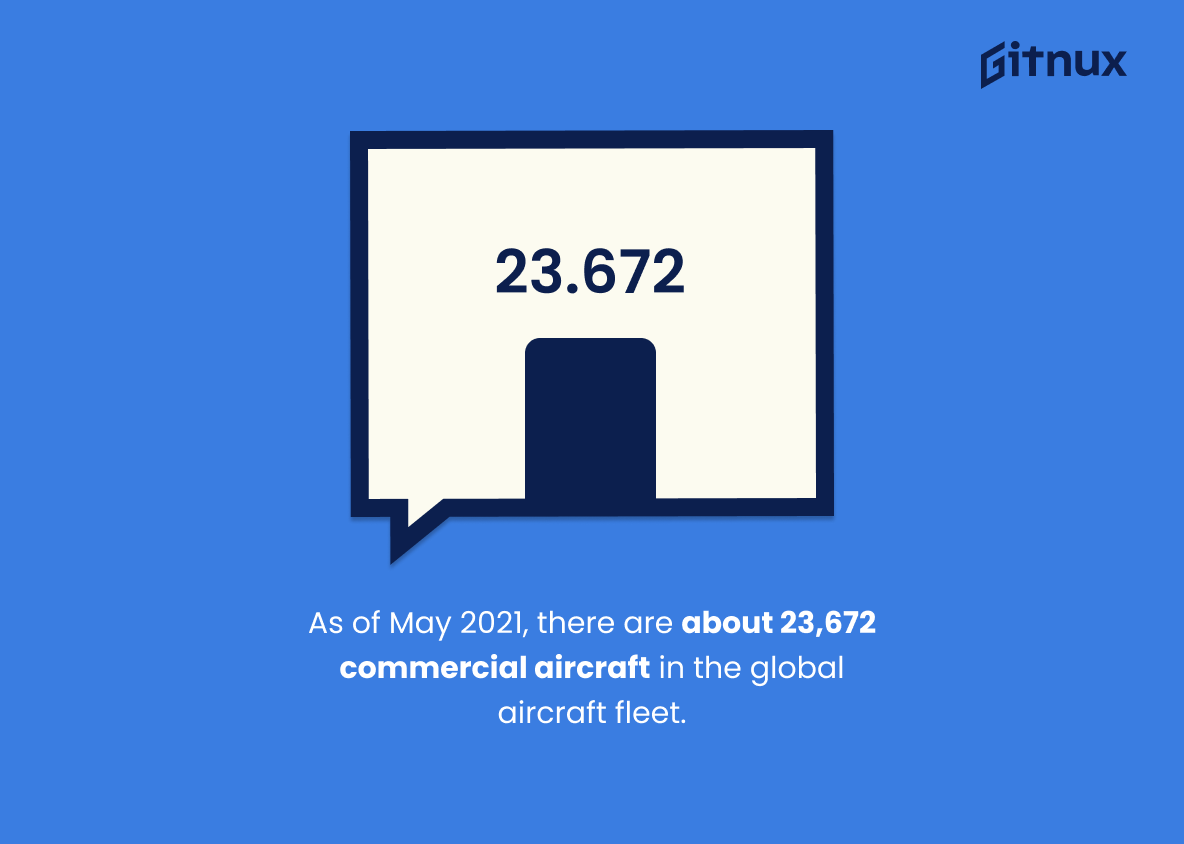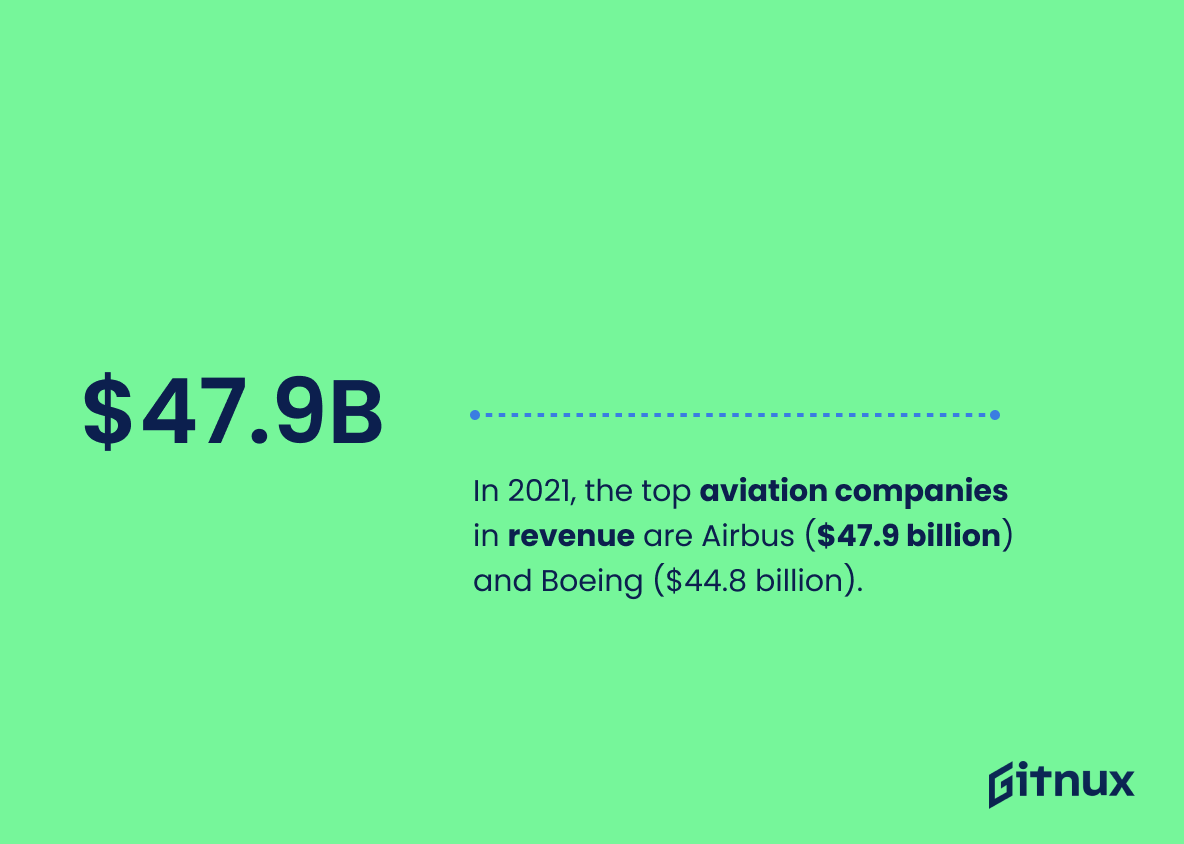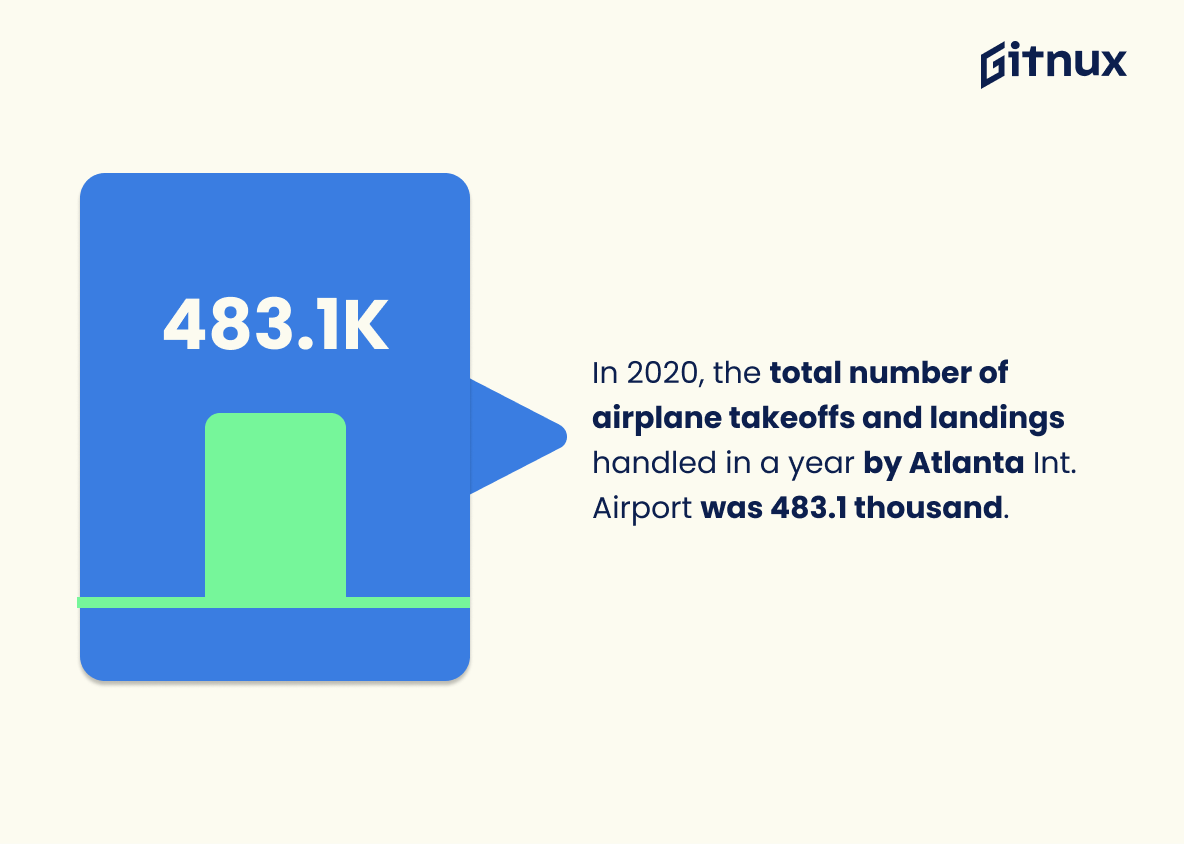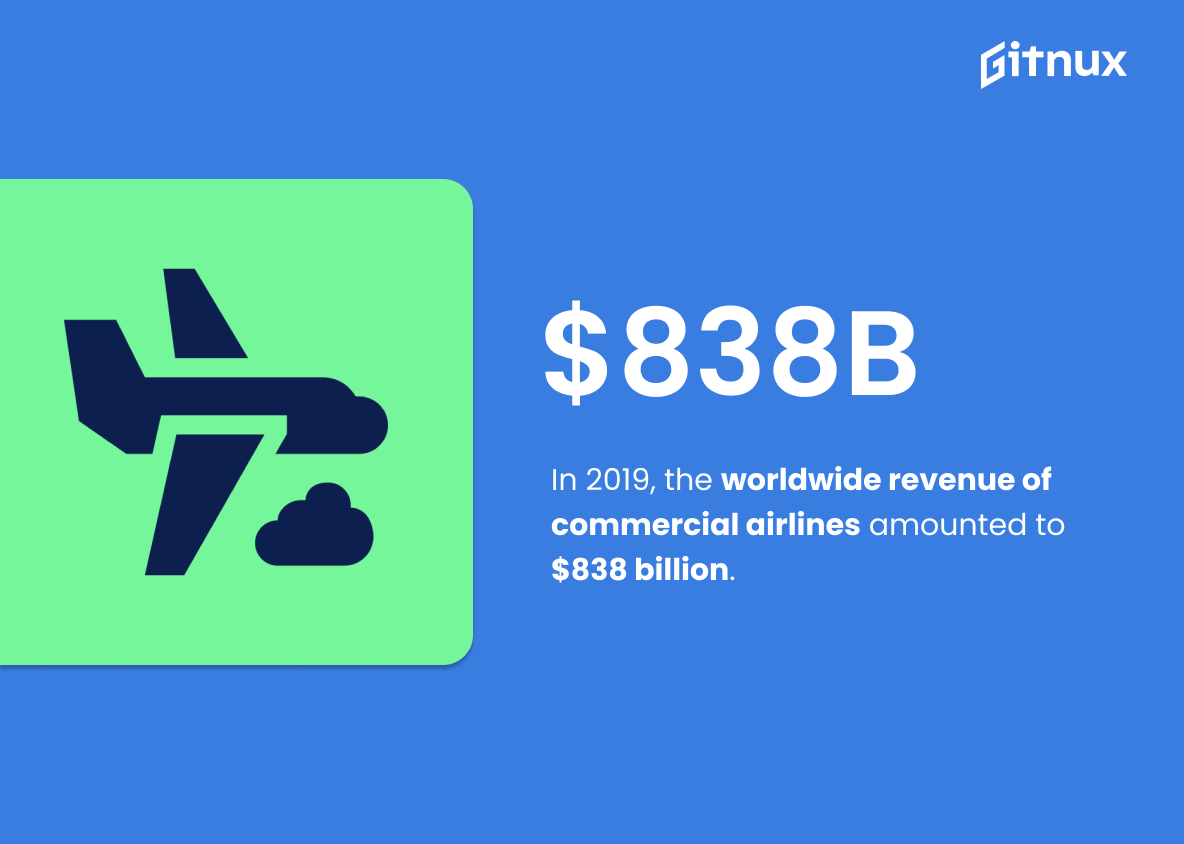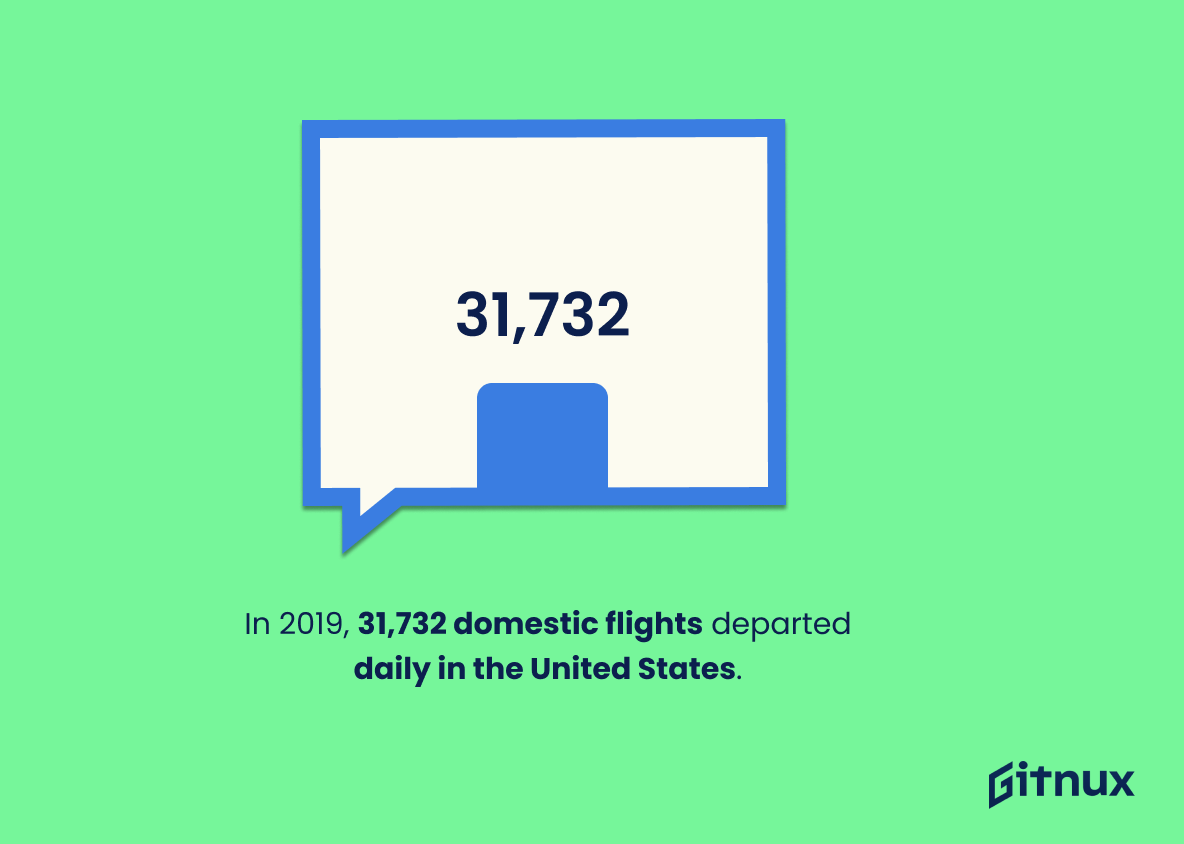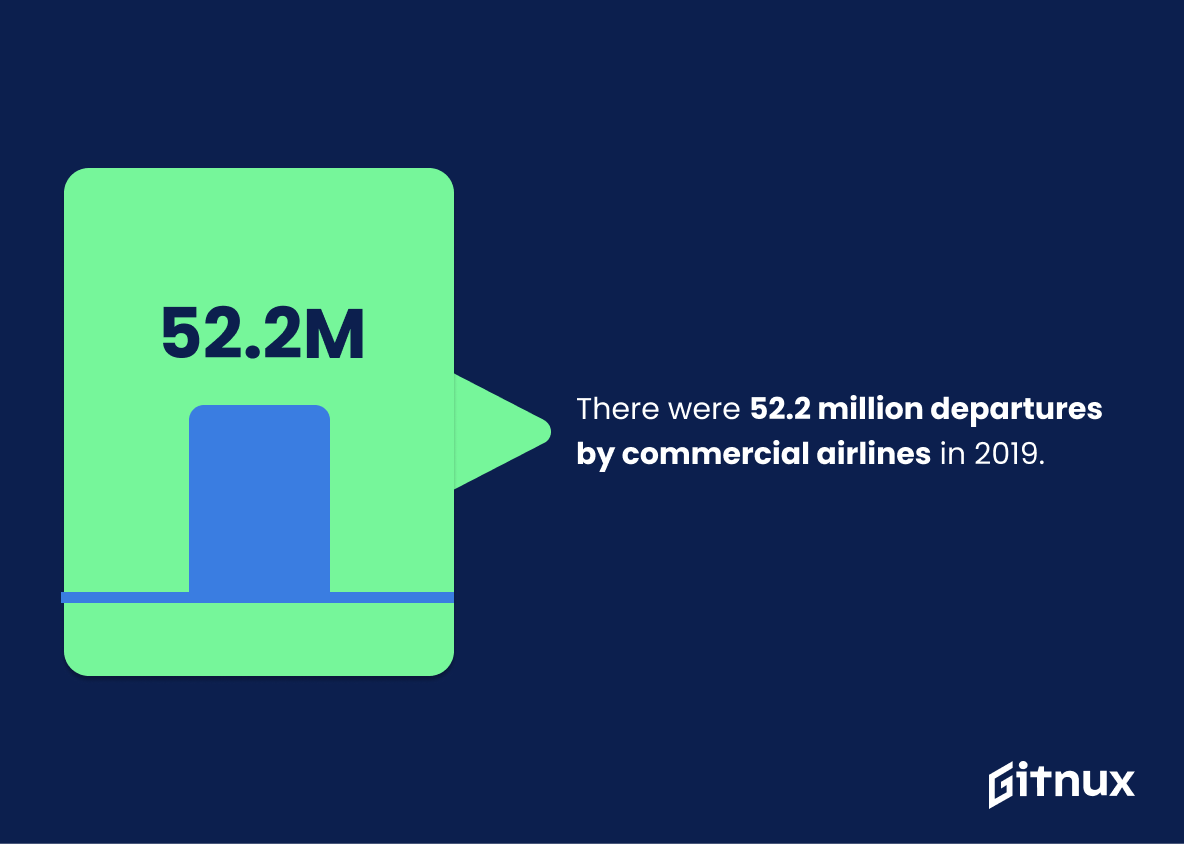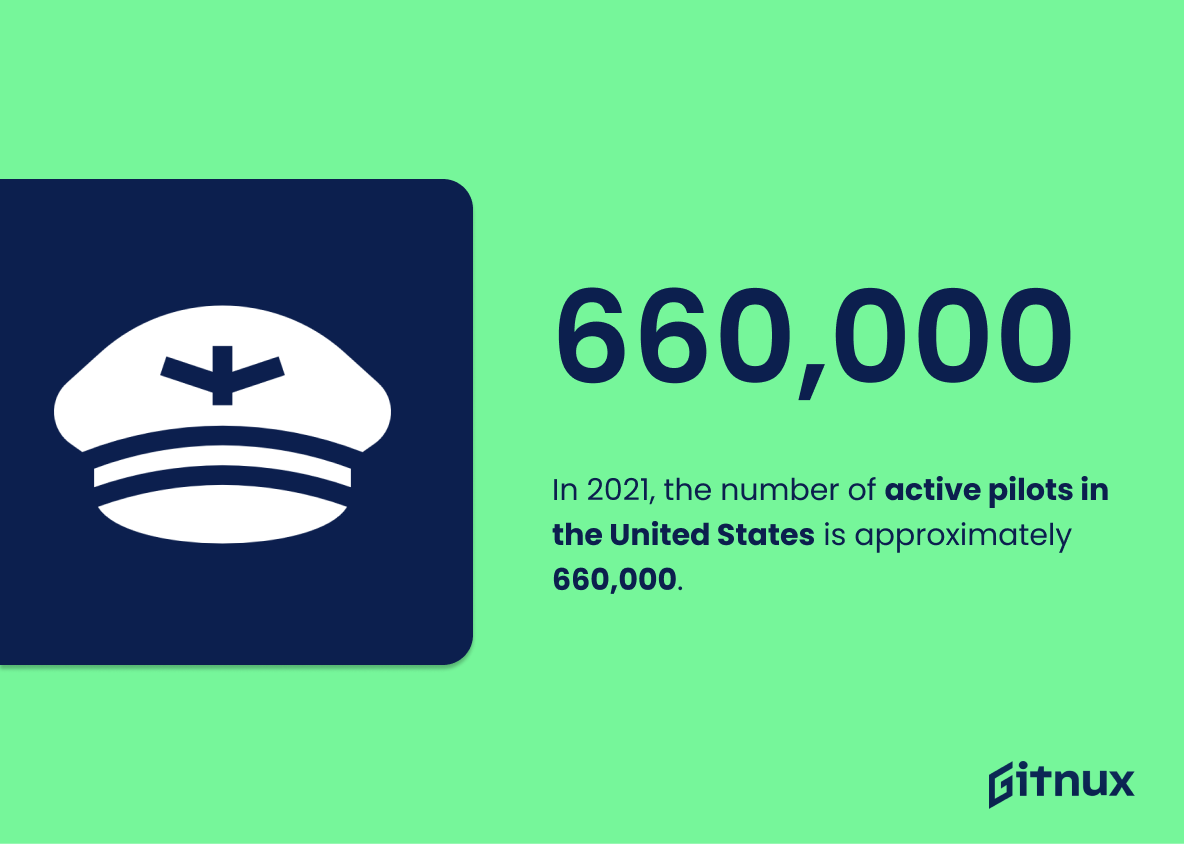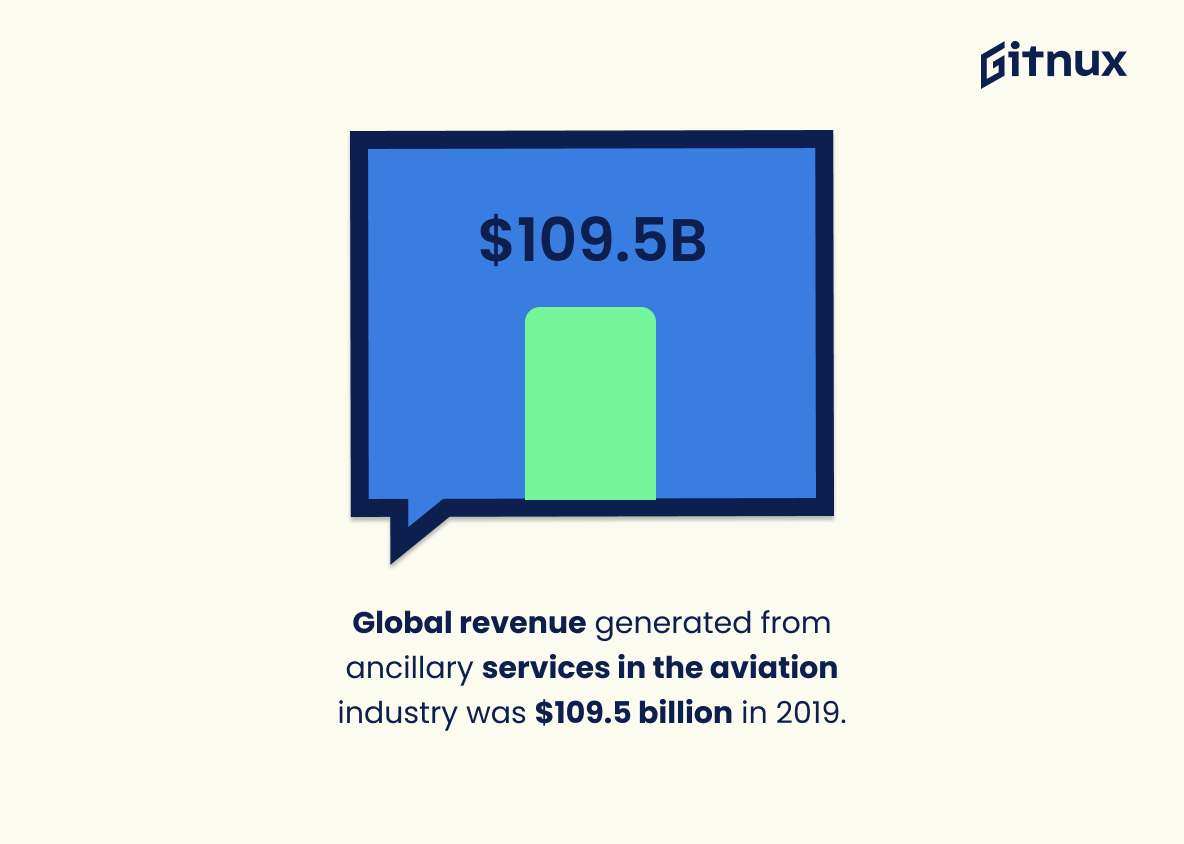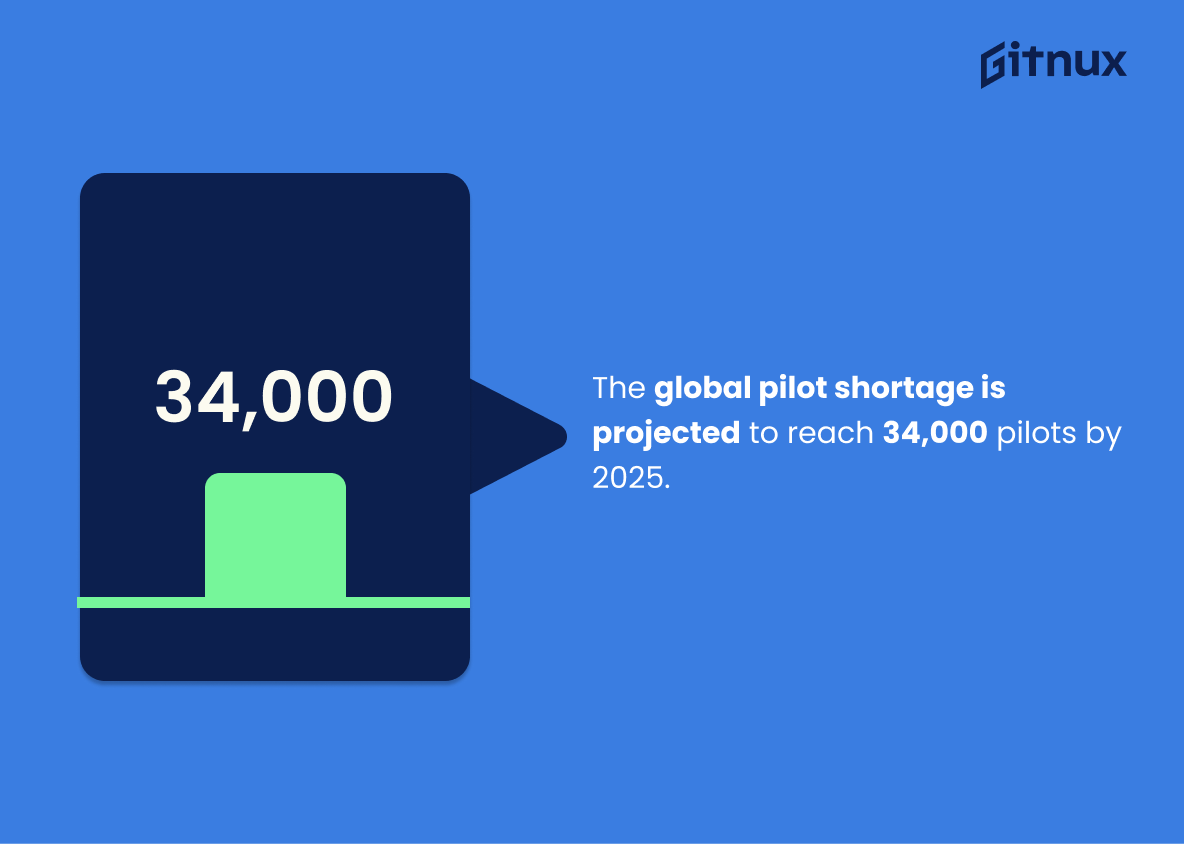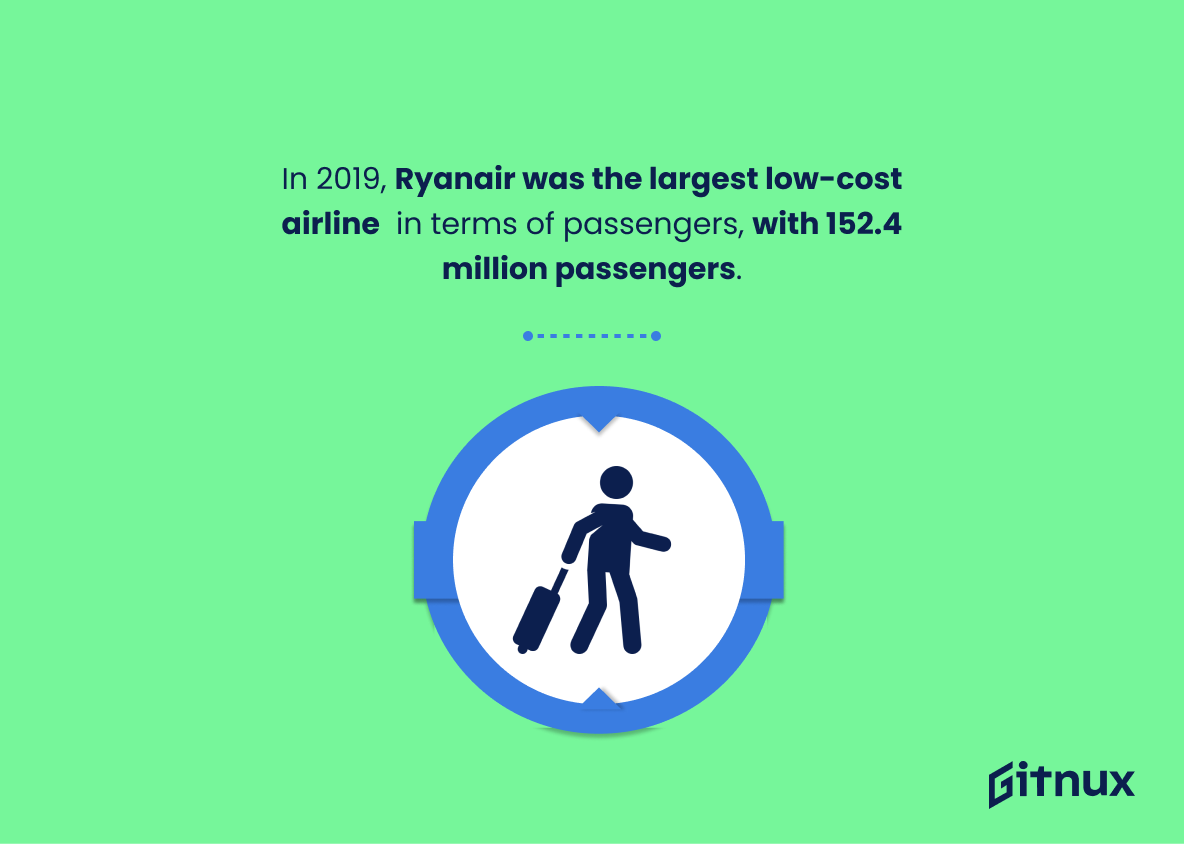The global aviation industry is a complex and ever-evolving sector that has an immense impact on the world. From its contribution to climate change, to the number of passengers it carries each year, there are many statistics that provide insight into this important industry. This blog post will explore 20 key aviation statistics from 2019 and 2020 related to passenger numbers, aircraft fleets, revenue generated by airlines and airports, air cargo traffic, pilot shortages and more.
This statistic is a stark reminder of the impact the aviation industry has on the environment. It highlights the need for the industry to take steps to reduce its carbon footprint and become more sustainable. It also serves as a call to action for governments and other stakeholders to take action to reduce emissions from the aviation sector.
In 2019, the total number of passengers carried by global airlines was 4.54 billion.
This statistic is a testament to the immense popularity of air travel, with 4.54 billion passengers taking to the skies in 2019. It highlights the importance of the aviation industry in our lives, and the need for reliable and safe air travel. This statistic is a key indicator of the industry’s success and its impact on the global economy.
Aviation Statistics Overview
In 2019, the U.S. had approximately 5,080 public airports.
This statistic is a testament to the importance of aviation in the United States. With over 5,000 public airports, it is clear that air travel is a major part of the country’s infrastructure and economy. This statistic is a reminder of the importance of aviation in the U.S. and the need to ensure that it remains safe and efficient.
As of May 2021, there are about 23,672 commercial aircraft in the global aircraft fleet.
This statistic is a testament to the sheer size of the global aircraft fleet, highlighting the immense scale of the aviation industry. It serves as a reminder of the importance of aviation in our lives, and the need for accurate and up-to-date statistics to ensure the safety and efficiency of the industry. This statistic is a key indicator of the health of the aviation industry, and is essential for understanding the current state of the industry.
In 2021, the top aviation companies in terms of revenue are projected to be Airbus ($47.9 billion) and Boeing ($44.8 billion).
This statistic is a testament to the immense success of the aviation industry, with two of the biggest companies in the sector projected to generate a combined total of nearly $93 billion in revenue. It is a clear indication of the industry’s strength and potential for growth, and serves as a valuable insight for readers of the blog post interested in aviation statistics.
In 2020, the total number of airplane takeoffs and landings handled in a year by Hartsfield-Jackson Atlanta International Airport was approximately 483.1 thousand.
This statistic is a testament to the importance of Hartsfield-Jackson Atlanta International Airport in the aviation industry. It highlights the sheer volume of air traffic that the airport is able to handle in a single year, demonstrating its significance as a major hub for air travel. This statistic is a valuable insight into the state of the aviation industry and the role that Hartsfield-Jackson Atlanta International Airport plays in it.
Global air cargo traffic reached 217 billion FTK in 2019.
This statistic is a testament to the immense growth of the aviation industry. It shows that air cargo traffic has increased significantly over the past year, indicating that the industry is thriving and that more people are relying on air cargo to transport goods. This is an important indicator of the health of the aviation industry and provides valuable insight into the current state of the industry.
In 2019, the worldwide revenue of commercial airlines amounted to $838 billion.
This statistic is a testament to the immense success of the aviation industry in 2019. It highlights the fact that commercial airlines are a major contributor to the global economy, and that the industry is thriving. This is an important point to consider when discussing aviation statistics, as it provides a valuable insight into the industry’s performance.
In 2019, 31,732 domestic flights departed daily in the United States.
This statistic is a testament to the sheer magnitude of the aviation industry in the United States. It highlights the sheer number of domestic flights that take off daily, showcasing the importance of the aviation industry in the US. This statistic is a powerful reminder of the impact that aviation has on the US economy and the lives of its citizens.
On average, 44% of the world’s population traveled by air at least once in 2018.
This statistic is a testament to the power of aviation in connecting people from all corners of the globe. It highlights the importance of air travel in our increasingly interconnected world, and the role it plays in bringing people together. It also speaks to the immense growth of the aviation industry, which has seen a steady increase in passenger numbers over the years. This statistic is a valuable insight into the current state of the aviation industry, and provides a useful reference point for further exploration into the topic.
There were 52.2 million departures by commercial airlines in 2019.
This statistic is a testament to the sheer magnitude of the aviation industry in 2019. It highlights the sheer number of people who took to the skies, demonstrating the importance of air travel in our lives. It also serves as a benchmark for the industry, providing a point of comparison for future years.
In 2020, the total commercial jet airplane inventory decreased by 10.2% compared to the previous year.
This statistic is a telling indication of the impact the COVID-19 pandemic has had on the aviation industry. The drastic decrease in commercial jet airplane inventory reflects the significant decrease in air travel due to the pandemic, and serves as a reminder of the far-reaching effects of the virus.
In 2021, the number of active pilots in the United States is approximately 660,000.
This statistic is a testament to the importance of aviation in the United States. With 660,000 active pilots, it is clear that aviation is a major industry in the country, providing jobs and economic opportunities for many. It also speaks to the level of expertise and skill required to be a pilot, as well as the dedication and commitment of those who choose to pursue a career in aviation. This statistic is a reminder of the importance of aviation in the United States and the impact it has on the economy and society.
Global revenue generated from ancillary services in the aviation industry was $109.5 billion in 2019.
This statistic is a testament to the immense potential of the aviation industry. It highlights the fact that ancillary services are a major source of revenue for the industry, and that the industry is continuing to grow and expand. This statistic is an important indicator of the industry’s success and provides insight into the future of the aviation industry.
In 2019, the United States had the highest number of aircraft accidents, with 228 incidents.
This statistic is a stark reminder of the importance of aviation safety. With the highest number of aircraft accidents in 2019, it is clear that the aviation industry needs to take steps to ensure the safety of passengers and crew. This statistic serves as a call to action for the aviation industry to prioritize safety and take the necessary steps to reduce the number of aircraft accidents.
The global pilot shortage is projected to reach 34,000 pilots by 2025.
This statistic is a stark reminder of the looming crisis in the aviation industry. With the global pilot shortage projected to reach 34,000 pilots by 2025, it is clear that the industry is facing a significant challenge in terms of recruiting and retaining qualified personnel. This could have a major impact on the safety and efficiency of air travel, as well as the overall economic health of the aviation sector.
In 2019, Ryanair was the largest low-cost airline company in terms of passengers carried, with 152.4 million passengers.
This statistic is a testament to the success of Ryanair as the largest low-cost airline company in terms of passengers carried. It highlights the impressive growth of the company, with 152.4 million passengers in 2019, and demonstrates the trust and loyalty of customers in the airline. This statistic is an important indicator of the aviation industry and provides valuable insight into the current state of the industry.
Asia-Pacific is the largest aviation market, accounting for 35.2% of total passengers in 2019.
This statistic is a testament to the immense potential of the Asia-Pacific aviation market. It highlights the fact that the region is the largest aviation market in the world, and that it is growing rapidly. This means that there are plenty of opportunities for airlines, airports, and other aviation-related businesses to capitalize on the growth of the Asia-Pacific market. Furthermore, it also serves as a reminder that the aviation industry is a global one, and that the Asia-Pacific region is an important part of it.
In 2019, the air traffic control and navigation market was valued at $8.25 billion.
This statistic is a testament to the immense size of the air traffic control and navigation market, demonstrating the importance of aviation in the global economy. It highlights the need for accurate and reliable data to ensure the safety and efficiency of air travel, and serves as a reminder of the vital role aviation plays in our lives.
In 2020, the global aviation market value fell by 42% to $476 billion, mainly due to the COVID-19 pandemic.
This statistic is a stark reminder of the devastating impact the COVID-19 pandemic has had on the global aviation market. It highlights the immense financial losses incurred by the industry, and serves as a warning of the potential long-term consequences of the pandemic. This statistic is an important piece of information to consider when discussing the current state of the aviation industry and its future prospects.
Conclusion
The global aviation industry is a complex and ever-evolving sector that has seen significant growth in recent years. From the 2% of total CO2 emissions it contributes to the 4.54 billion passengers carried by airlines worldwide, there are many impressive statistics associated with this industry. The U.S alone had 5,080 public airports in 2019 while 23,672 commercial aircraft were part of the global fleet as of May 2021. Airbus and Boeing topped revenue projections for 2021 at $47.9 billion and $44.8 billion respectively while Hartsfield-Jackson Atlanta International Airport handled 483 thousand takeoffs/landings last year alone. Air cargo traffic reached 217 FTKs globally in 2019 along with 838 billion dollars generated from airline revenues during that same period; 31,732 domestic flights departed daily within US borders too. On average 44% of people traveled by air at least once in 2018 which was followed up by 52 million departures made via commercial airlines throughout 2019 – an inventory decrease (10%) was observed among jet airplanes however due to 2020’s pandemic situation causing market value drop ($476B). Ryanair led low cost carriers’ passenger count (152M) whereas Asia Pacific held 35% share amongst all regions regarding passengers flown & finally ATC&N services earned 825M USD back then.
References
0. – https://www.iata.org
1. – https://www.wwf.panda.org
2. – https://www.statista.com
3. – https://www.data.worldbank.org
